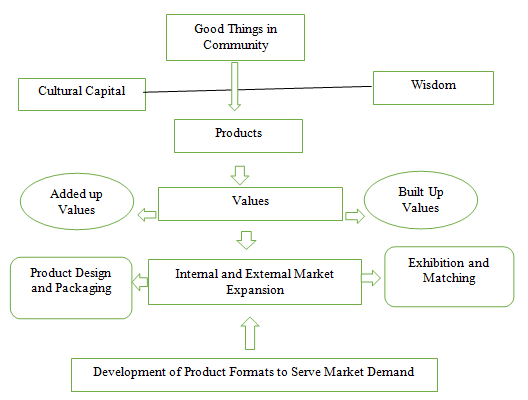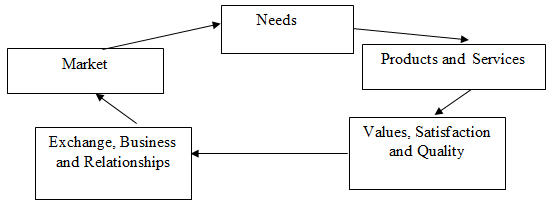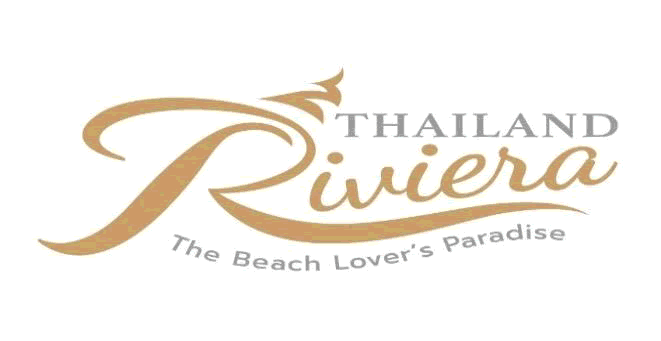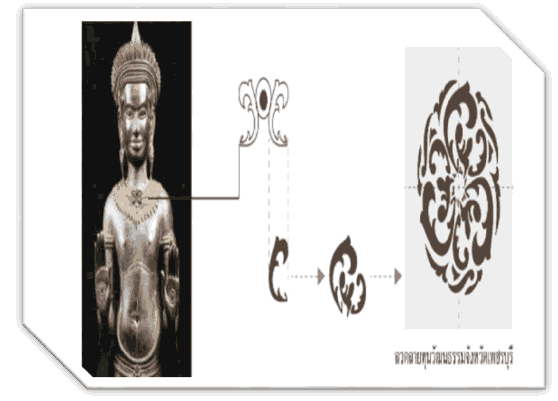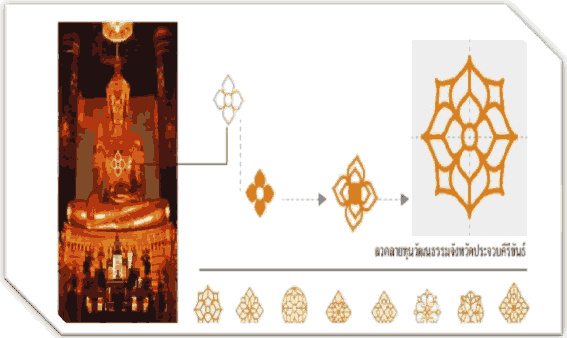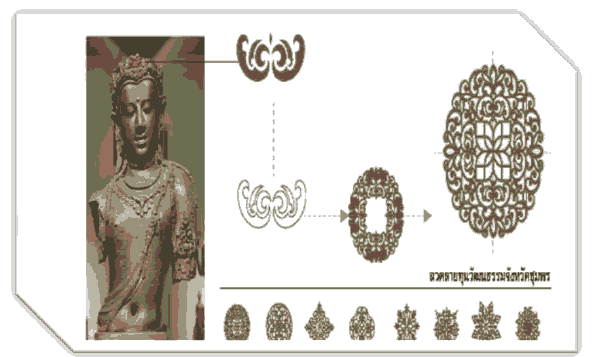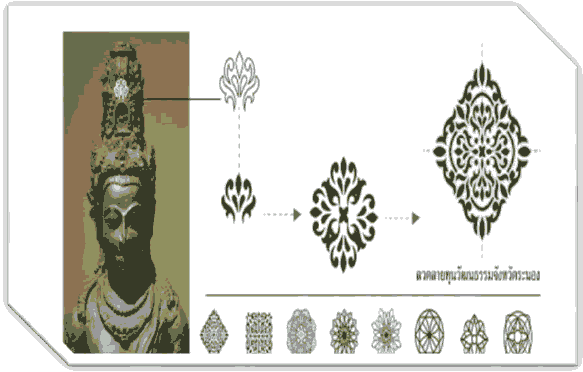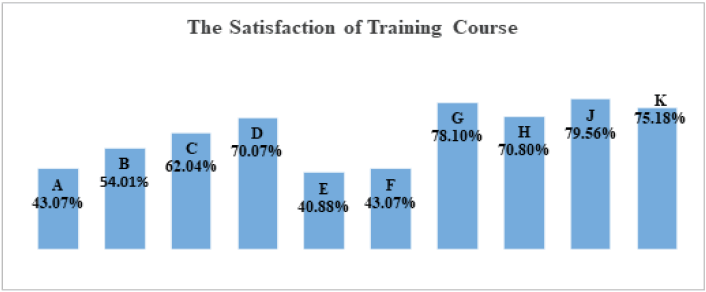Research Article: 2021 Vol: 25 Issue: 4S
Community Products Based on Identity of Cultural Capital for the Being of Gifts and Souvenirs Related to Tourism
Narin Sungrugsa, Silpakorn University
Wicharn Junharik, Thaksin University
Sawanya Hammaapipon, Silpakorn University
Prapon Leksuma, Nakhon Pathom Rajabhat University
Mutchima Udomsilp, Nakhon Pathom Rajabhat University
Auat Areerop, Nakhon Pathom Rajabhat University
Kallaya Wiriya, Suranaree University of Technology
Piyalak Phetaue, King Mongkut's University of Technology North Bangkok
Abstract
To develop creatively the community products based on identity of cultural community capital serve to the demand of quality of high-end tourists who have more opportunity to purchase the products and services. This research and development aimed to 1) develop the community products creatively based on identity of cultural capital, 2) build up the market channels through the alliances of tourism marketing. The samples and key informants of the study were 400 tourist, 123 entrepreneurs of community products, and 20 stakeholders. The research instruments were a questionnaire, guidelines of an in-depth interview, and guidelines of focus group discussion. The research finding revealed that: 1) to develop the community products, the tourists demanded to the products at a high level. The training course was arranged and the pre-posted test scores of participants yielded significant differently at p= .05, 2) to build up in market channels of community products through the alliances of tourism marketing, Stakeholders who joined tourist marketing through the online-training course had their satisfaction to the course at a high level.
Keywords
Community Products/ Cultural Capital/ Gifts and Souvenirs/Tourism and Services
Introduction
In the creativity of cultural- based products, network of creative economy would lead to the steps of walking beyond economic issue to cultural issue, product designation and finally to the all human activities (Hawkins& Coney, 2001; UNCTAD, 2008). UNCTAD (cited above) stated that the creative economy was the way to develop country to be the efficiency-driven and innovation-driven economy. To develop the creative thought based on the cultural capital it was then the important thought which could build up the outstanding properties and the more incomes for the country (Pattamasiriwat, 2004). The development of products in many countries especially in Japan country which was called to “One Village One Product: OTOP” would focus on the identities of each area (Sungrugsa, et al., 2019). Instead of the production of mass products, the production should be focused on more the building up of added up values. The cultural capital was therefore the one way how to make the differences of products/goods which were occurred based on the creative thought (Fuller, 1994).
Tourism can be seen as recreational activity that could increase the greater incomes to many of the countries (Siriwongse et al., 2018; Jermsittiparsert, & Chankoson, 2019; Jermsittiparsert, Joemsittiprasert, & Phonwattana, 2019). Such the incomes were gained from the consumption expenditures of foods, lodgings and other related services, gifts and souvenirs. For the examples of China, South Korea and Taiwan, all of them have many attractive sites and these sites also would have their outstanding and interesting local products which were used to promote and distribute for the visitors. In the past, Thailand had limitation of how to take the local community products to sell as the gifts and souvenirs for the visitors. Various products had their shortages of identities and outstanding properties and these did not inspire and persuade the customers to interest and purchase. (PharaSakul, 2016). To take the cultural capital to add up in the values of products and its packages such as the products could have their beautiful and outstanding properties, it would build up the new markets of community products and motivate the entrepreneurs to produce and develop the products more than being (Techathawewan, 2002).
The research steps were started from studying the cultural capital being in the four provinces of the royal coast: Phetchaburi, Prachuap Khiri Khan, Chumphorn & Ranong to develop creatively the community products based on identity of cultural community capital. This was to serve the demand of qualitative tourists who have their high power or more opportunity to purchase the products and services in the development areas of tourism of the royal coast and build up the market channels of community products through the alliances of tourism market. The data was collected, analyzed and taken into the process of how to develop creatively the cultural capital based-community products according to the development plan of “Thailand Riviera” tourism (Ministry of Tourism and Sport, 2017).This was designed to serve the market demand and it would lead to the building up of market channels of the community enterprises through the alliances of tourism market. The expected benefits were to the increasing values of the community products. The products would have their out-standing and different properties serve to the tourist demands. Furthermore, the market channels were expanded based on the co-working of alliances.
Literature Review
Cultural Capital is regarded as “cultural goods” and this should have its at least the one cultural implication such as traditions, faiths, value systems, norms, ethics, ways of life, consumption, relaxation, recreations, sports, dressing, literatures and printed media (Sungugsa and et al., 2019:17)
To develop the community products to achieve the creative values, and to design and develop the products and its packages to serve the customer demand including to the business exhibition and negotiation it could be presented as shown to Figure 1:
Core Concept of Marketing (Kotler & Armstrong, 2012) would consist of (1) Needs, Wants and Demand (2) Products and Services (3) Values, Satisfaction and Quality (4) Exchange, Business and Relationships (5) Market as shown to Figure 2:
From the studied of Zeithaml &Bitner (2000) on the Effect of service quality and marketing stimuli on customer satisfaction: The mediating role of purchasing decisions found that purchasing decisions were positive and significant impact on customer satisfaction.
Resrarch Methodology
This study was a research and development project. The research process was divided into 2 steps as: Step I: The development of community products based on identity of cultural capital, the process of this step started from 1) seeking out the demand of tourists and tourist entrepreneurs, 2) looking for the identity of cultural capital, 3) designing the community products matched to the demand and the identity mentioned above, 4) the arrangement of one practical training course and 5) providing the two times advisement. To gain the primary and secondary research data, the 400 tourists selected by the technique of multi-stage sampling with their questionnaires having its reliability value =0.879 was used. Besides the stakeholders 20 person were interviewed with the guidelines of in-depth interview. Step II: The Building up in market channels of community products through the alliances of tourism marketing, the key informants were the 123 entrepreneurs of community products. All of them would take their own products (123 product items) to market test with the instrument of market test. All of the quantitative and qualitative data collected were analysed with the computer programs of social statistical analysis and its technique of content analysis respectively.
Research Results
Part I:The Results of Research Development on the Community Products based on Identity of Cultural Capital.
The Demand of High Qualitative Tourists
It was found that the tourist group demanded overall to the products at a high level. When considering into each of the items, the item named “The products and packages should have its local identity” was given the score at the highest ranking, and this was prioritized at very high value. The subordinate item was to “the product packages should have the contents of storytelling” and this was at very high level as well. The lowest item named “The products should have their good quality and it is enough to make decision to purchase the products without any its pricing concern”, and this was evaluated at moderate level.
The Seeking out of Identity of Cultural Capital on the Development of Product
Based on the data, the research team designed the one market brand of products named to “Thailand Riviera the Beach Lover’s Paradise” and this was reflected to the long beach of the western coast starting from the first grain of sand in Phetchaburi Province located on the Thai gulf sea coast to Ranong Province on the Andaman coast beach. Due to the bright colorful golden colored sea sand of these beaches the code name “Thailand Riviera” was so designed to have its colorful golden alphabets.
The Seeking out of Cultural Capital
The areas of provinces on the royal coast have their three main heritages including the Lop Buri cultural heritages of Phetchaburi Province, the Ayutthaya cultural heritages of Prachuap Khiri Khan and the Sriwichai cultural heritages of Chumphon Province and Ranong Province. The market brand names of products produced from these four provinces then were designed to match with their own heritages as mentioned above.
The Practical Training Course
This was arranged for the one day course for the entrepreneurs of community products including the community enterprises and the entrepreneurs of OTOP products The results from the 123 trainees who joined the training course was shown as Table I:
| Table 1 The Comparative Study of Knowledge Test Before and After the Training Course |
||||||||
|---|---|---|---|---|---|---|---|---|
| Results | n | Total Score | x̄ | S.D. | Interpretation | df. | t | Sig |
| Before | 123 | 15 | 9.50 | .847 | Moderate | 122 | 4.279* | .000 |
| After | 123 | 15 | 11.10 | .657 | Moderate | |||
From the Table I, it showed that the pre-tested score of knowledge was= 9.50 and this was evaluated at moderate level. The post-tested score was=11.10 and this was evaluated at much level. The pre-post tested scores were significantly different at P < .05.
To evaluate the satisfaction of trainees toward the training course it was found that the trainees satisfied overall to the course at much level. The sub-titles of training, its contents and knowledge gained were evaluated at the first ranking. The management of course was at the sub-ordinated order. All of these were measured at much level. More of these could be shown at the Figure 1.
The items of satisfaction
A = Project Publication
B = Convenient Application into the Project
C = Co-operation and Data Provision before Entering into the Project
D = Documents of Training Course
E = Place Used for the Training Course
F = Time Used for the Training Course
G = Trainers of the Course
H = Foods and Desserts
I = Benefits Gained from the Course
J = Overall of Project Evaluation
The Advisement of How to Develop the Community Products
On the first meeting, all of these things as the names of entrepreneurs and their business names, the phone numbers and residences, the date of registration, the products wanted for developing, the targets of development, the focused issues and guideline of consultation, the overall problems of the entrepreneurs, the pictures of the entrepreneurs, their products and manufacturing sites. On the second meeting, the names of the entrepreneurs and their business names, the phone numbers and residences, the date of consultation, the problems of consultation, the sign up of the entrepreneurs and their consultants were also as well recorded.
The pictures of products before and after developed were taken. The activities were included to the market planning of developed products, the targeting of customers, the designation of wanted packages in additional to the printed alphabets for communicating to the customers, and the ways of how to set up the prices of products and how to drive the activities of market promotion.
To evaluate the satisfaction of entrepreneurs (5 rating scales) toward the packages of products, it could be presented as shown to the Table 2:
| Table 2 The Satisfaction of Entrepreneurs to the Product Packages(N=123 Persons) |
||||
|---|---|---|---|---|
| The satisfaction of entrepreneurs | x̄ | S.D. | Interpreted | Ranked |
| 1. The Utilization of product package | 4.29 | 0.73 | High | (1) |
| 1.1 The product package has its efficient protection | 4.31 | 0.73 | High | 2 |
| 1.2 The product package is convenient to carry , store and for sale | 4.35 | 0.63 | High | 1 |
| 1.3 The product package has its size suitable for usage | 4.31 | 0.83 | High | 2 |
| 1.4 The product package is convenient to utilize | 4.20 | 0.74 | High | 3 |
| 2. The Marketing of product package | 4.26 | 0.69 | High | (2) |
| 2.1 The color used on the product package is suitable | 4.33 | 0.63 | High | 1 |
| 2.2 The alphabets used on the product package is suitable | 4.30 | 0.83 | High | 3 |
| 2.3 The cultural arts and pictures used on the package are suitable | 4.27 | 0.74 | High | 4 |
| 2.4 The graphic designation on the package is suitable | 4.31 | 0.75 | High | 2 |
| 2.5 The graphic designation on the product package can communicate the clear data of product properties | 4.22 | 0.73 | High | 5 |
| 2.6 The product package can build up image memory and inspiration | 4.23 | 0.54 | High | 6 |
| 2.7 The package can increase the values of products | 4.19 | 0.63 | High | 7 |
| Total | 4.27 | 0.71 | ||
From the table 2, the entrepreneurs satisfied overall to the project at a high level
(=4.27). To consider the utilization of product package, it was overall evaluated at a high level (=4.29). The four items of these named to “The product package is convenient to carry, store and for sale”, “The product package has its efficient protection” “The product package has its size suitable for usage” and “The product package is convenient to utilize” were evaluated at much level. These had the mean score and standard deviation values = =4.35, =4.31, =4.31 and =4.20 respectively. For the marketing of product package, it was overall evaluated at a high level (=4.26) as well. The highest item was to “The color used on the product package is suitable” (=4.33). The sub-ordinate item was to “The graphic designation on the package is suitable” (=4.31) and the lowest was to “The package can increase the values of products” (=4.19).
The Building Up In Market Channels of Community Products through the Alliances of Tourism Marketing
The Online Training Course of Entrepreneurs
The online training course of entrepreneurs was set up in its strategy and contents about how to drive the contents of marketing and how to carry out the strategic management and adjust the plan of new business. The schedule time was manipulated during 14th -15th June 2021. Doing this, the research team invited 2 experts to provide the knowledge and guidance for the trainees. Before the training course, the pre-tested mean score of trainees was at 6.50 and this was evaluated at low level. After the training was terminated the post-tested means score was measured to be at 10.14 and this was at moderate level. The pre-post tested scores were significantly different (dependent t-test = 5.278, P < .05). The participants satisfied overall to the course were at a high level.
The Activities of Market Testing through the Event Marketing
The new prototype products of entrepreneurs were tested with the activities of even marketing. The data was collected and analyzed for its probabilities to implement on the market activities and this could be established to be the business of community enterprise. The research team cooperated with the one community enterprise called to “Hua Hin OTOP Center” which is operating its business following to the King Rama 9’s Philosophy. This is the famous and well-known place of the community product distribution in Hua Hin District, Prachuap Khiri Khan Province. Some of the prototype products were taken to exhibit and test the market or sale here. It was found that many of the products especially in the consumer goods were popular among the tourist customers. These were slightly different from the previous gift and souvenir goods which were sold. For the future if the situation of Covid-19 epidemic will be better or the government will open the Hua Hin area for the visiting of qualitative tourists, it can be surely expected to that the tourists will be increased in its numbers of visitors and the community products will be better sold and the community incomes are significantly increased. However, the products should have their various identities, low pricing, and outstanding properties based on the cultural heritages. The Hua Hin OTOP Center should arrange and implement the activities of market promotion of community products and this should be grounded on the newly modernized management as well.
The Exhibition Forum of Prototype Products
Due to the measurement of social distancing of Covid-19, the forum of prototype product was arranged and limited to the only 30 numbers of tourism alliances. The President of Federation of Prachuap Khiri Khan Industries was invited to open this forum. By largely the participants were female (66.67%), age ≥ 60 years old (19.84), they were married (60.00%), and had their income level ≥ 20,001-30,000 Baht (36.66%). The participants satisfied overall to the community products at much level. The highest scored item was “The products have their outstanding identities” and this was evaluated at very high level. The sub-ordinate item was “The prototype products match with the target market” and this was at very high level as well. The lowest item was “The local wisdoms are inserted in the products”, this was at a high level.
Discussion and Conclusion
The development of community products based on identity of cultural capital for the being of gifts and souvenirs is regarded to be the process how to add up the values for the products and it will also create the body of knowledge and build up the sharing experiences in developing the products occurring among the entrepreneurs. This study was started from the seeking out cultural capital being in the development area of The Royal Coast and after that the collected data would be analysed and entered the process of cultural community capital- based product development. The process of product development was also developed to be suitable to The Development Plan of Tourism of “Thailand Riviera”. This was to serve the market demand and would create the new market channels of community products especially for the market channel of qualitative tourist group. The new market channel mentioned here could make the community dwellers gain their more incomes from the production and distribution of products. This study is consistent to the former study of Lekhakul & Ruksawin (2004) studying the title “Tourism Routes for Spending Expenditures of Chiang Mai Handicraft Products” and it was found that the exhibition forum of various brighten colorful products could induce the tourists to spend the more money expenditures for the exhibited goods. To utilize the cultural capital to add up the values of goods and to make the products especially in its packages have their outstanding properties. Such as the Japan, South Korea and Taiwan country these will prioritize to make their product packages of gifts and souvenirs to have its properties of outstanding, identity and local wisdom. The products will therefore inspire or persuade the tourists to interest and purchase the products finally. It can be stated that the development of cultural capital based-products will have its effects to the products to have their outstanding and different properties and these are served to the quality tourists. It will be the way to expand the new channel of tourism market and lead to the development of community products. This model can be applied to the other regional areas. The cultural capital of areas are expected to preserve and inherit in the future.
References
- Ana, L.d.B. (2008). “Sustainable cultural tourism.” 8 World Congress of Friends of Museums, Jerusalem, September (19),389-400.
- Berkowitz, E.N., Kerin R.A., & Hartley, S.W. (2000). Marketing. (6th edition) New York: McGraw-Hill.
- Development Area of the Royal Coast. (2016). National Research Council of Thailand Plan.Bangkok: The Thailand Research Fund.
- Department of Industrial Promotion, Ministry of Industry. (2018). Grass root economy. Journal of Industrial Messages. July-August, 60, 3.
- Hawkins, L.D. & Coney, K.A. (2001). Consumer behavior: building marketing strategy (8th ed.) McGraw-Hill: Companies.
- Jermsittiparsert, K., & Chankoson, T. (2019). Behavior of tourism industry under the situation of environmental threats and carbon emission: Time series analysis from Thailand. International Journal of Energy Economics and Policy, 9(6), 366-372.
- Jermsittiparsert, K., Joemsittiprasert, W., & Phonwattana, S. (2019). Mediating Role of Sustainability Capability in Determining Sustainable Supply Chain Management in Tourism Industry of Thailand. International Journal of Supply Chain Management, 8(3), 47-58.
- Kotler, P., & Armstrong G. (2012). Principle of marketing. (4th ed.) New Jersey : Pearson Education.
- Lekhakul, A., & Ruksawin K. (2004). Tourism routes for spending expenditures of Chiang Mai handicraft products. Bangkok: The Thailand Research Fund.
- Ministry of Tourism and Sport. (2017). 2th National Development Plan of Tourism (2017-2021). Bangkok: Office of the Permanent Secretory.
- National Economic and Social Development Board. (2018). Master Plan under 16 Strategic Issues of Grass Root Economy 2018-2037. Bangkok: Office of National Economic and Social Development Board.
- Pattamasiriwat, D. (2004). Social capital and cultural capital in economy system and new modern management. Phitsanulok: Faculty of management and information science, Naresuan University.
- PharaSakul, L. (2016). Behaviors of tourists. (3th edition). Bangkok: Chulalongkorn University Printing Office. Siriwongse P., et al., (2018). Branding of Tourism in Bangkok.
- Stryker, S., & Burke, P. J. (2000). The past, present and future of identity theory. Social Psychology Quarterly, 63, 284-297.
- Sungrugsa, N., et al., (2018). The project of seeking out and building up the increasing values from identities and storytelling of community. Bangkok: Department of Tourism, Ministry of Tourism and Sports.
- Sungrugsa N., et al., (2019). The project of cultural capital and local wisdoms-based product development in central and southern parts for its out-standing properties. Bangkok: Department of Industrial Promotion, Ministry of Industry.
- Techathawewan, S. (2002). Behaviors of tourists. Khon Khaen: Khon Khaen University.
- UNCTAD. (2008). Creative Economy Report 2008. UNDP Special Unit for South-South Cooperation.
- Zeithaml, V.A., & Bitner, M.J. (2000). Services Marketing. Boston: McGraw-Hill.
